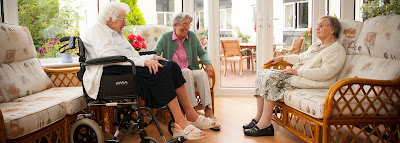What is Cerebral palsy?
Cerebral palsy is primarily a disorder of movement and posture. It is defined as an umbrella term covering a group of non-progressive, but often changing, motor impairment syndromes secondary to lesions or anomalies of the brain arising in the early stages of its development. It may be stated as a static encephalopathy in which, even though the primary lesion, anomaly or injury is static, the clinical pattern of presentation may change with time due to growth and developmental plasticity and maturation of the central nervous system.
What are the Various types of Cerebral palsy?
There are several different types of cerebral palsy:
Spastic cerebral palsy
This is the most common type of cerebral palsy. Spasticity means stiffness or tightness of muscles. The muscles are stiff because the messages to the muscles are relayed incorrectly from the damaged parts of the brain. When people without cerebral palsy perform a movement, groups of muscles contract whilst the opposite groups of muscles relax or shorten in order to perform the movement. In children with spastic cerebral palsy, both groups of muscles may contract together, making the movement difficult.
Dyskinetic cerebral palsy
This refers to the type of cerebral palsy with abnormal involuntary movements. It is divided into two types of movement problems, called dystonia and athetosis.
• Dystonia – this is the term used for sustained muscle contractions that frequently cause twisting or repetitive movements, or abnormal postures.
• Athetosis – this is the word used for the uncontrolled extra movements that occur particularly in the arms, hands and feet, and around the mouth. The lack of control is often most noticeable when the child starts to move – for example, when the child attempts to grasp a toy or a spoon. In addition, children with athetoid cerebral palsy often feel floppy when carried.
Ataxic cerebral palsy
This is the least common type of cerebral palsy. Ataxic (or ataxia) is the word used for unsteady shaky movements or tremor. Children with ataxia also have problems with balance.
Mixed types
Many children do not have just one type, but a mixture of several of these movement patterns. Some of these concepts are difficult to understand. Please discuss them further with your therapist or doctor.
Which part of the body is affected?
Again, this varies greatly from one child to another. Certain words are used to describe the parts affected:
Hemiplegia – the leg and arm on one side of the body are affected (also described as hemiparesis). Diplegia – both legs are predominantly affected. Children with diplegia usually also have some difficulties with their arm and hand movements.
Quadriplegia – both arms and both legs, and the trunk are affected (also described as quadriparesis). The muscles of the face, mouth, and throat can also be involved.
What are the causes of cerebral palsy?
Cerebral palsy occurs in about two in every thousand children. There are many different causes. A problem with the brain can occur:
1. If the brain does not grow or form properly. The result is that children may have brain malformations.
2. In the early months of pregnancy – for example, if the mother is exposed to certain infections such as Rubella (German Measles), or Cytomegalovirus (CMV).
3. During labor or at birth – for example, if the baby does not receive enough oxygen.
4. In the period shortly after birth – for example, when an infant develops a severe infection, such as meningitis, in the first few days or weeks of life.
5. In children having accidents in the early years of life, causing permanent brain injury. These children are also considered to have cerebral palsy.






